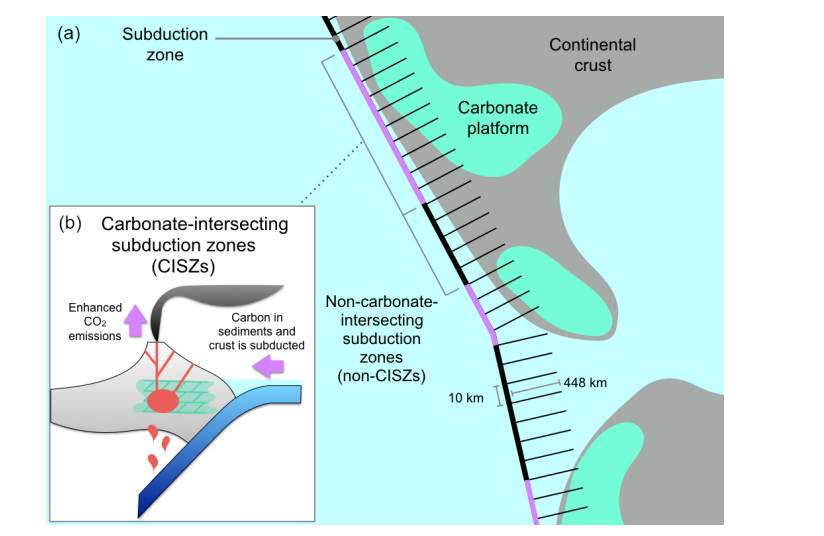Abstract: The CO2 liberated along subduction zones through intrusive/extrusive magmatic activity and the resulting active and diffuse outgassing influences global atmospheric CO2. However, when melts derived from subduction zones intersect buried carbonate platforms, decarbonation reactions may cause the contribution to atmospheric CO2 to be far greater than segments of the active margin that lacks buried carbon-rich rocks and carbonate platforms. This study investigates the contribution of carbonate-intersecting subduction zones (CISZs) to palaeo-atmospheric CO2 levels over the past 410 million years by integrating a plate motion and plate boundary evolution model with carbonate platform development through time. Our model of carbonate platform development has the potential to capture a broader range of degassing mechanisms than approaches that only account for continental arcs.
Continuous and cross-wavelet analyses as well as wavelet coherence are used to evaluate trends between the evolving lengths of carbonate-intersecting subduction zones, non-carbonate-intersecting subduction zones and global subduction zones, and are examined for periodic, linked behaviour with the proxy CO2 record between 410 Ma and the present. Wavelet analysis reveals significant linked periodic behaviour between 60 and 40 Ma, when CISZ lengths are relatively high and are correlated with peaks in palaeo-atmospheric CO2, characterised by a 32–48 Myr periodicity and a ∼ 8–12 Myr lag of CO2 peaks following CISZ length peaks. The linked behaviour suggests that the relative abundance of CISZs played a role in affecting global climate during the Palaeogene. In the 200–100 Ma period, peaks in CISZ lengths align with peaks in palaeo-atmospheric CO2, but CISZ lengths alone cannot be determined as the cause of a warmer Cretaceous–Jurassic climate. Nevertheless, across the majority of the Phanerozoic, feedback mechanisms between the geosphere, atmosphere and biosphere likely played dominant roles in modulating climate. Our modelled subduction zone lengths and carbonate-intersecting subduction zone lengths approximate magmatic activity through time, and can be used as input into fully coupled models of CO2 flux between deep and shallow carbon reservoirs.

Citation: Pall, J., Zahirovic, S., Doss, S., Hassan, R., Matthews, K. J., Cannon, J., Gurnis, M., Moresi, L., Lenardic, A., and Müller, R. D.: The influence of carbonate platform interactions with subduction zone volcanism on palaeo-atmospheric CO2 since the Devonian, Clim. Past, 14, 857-870, https://doi.org/10.5194/cp-14-857-2018, 2018.
Updated and more comprehensive supplement – time series, animations, and updated data/workflows (v2):
Updates: Active carbonate platforms youngest age restricted to 2.6 Ma (end Pliocene). Donut polygons fixed, and active carbonate grids recomputed.
Original supplement – time series, animations, and data/workflows (v1):
![]()
